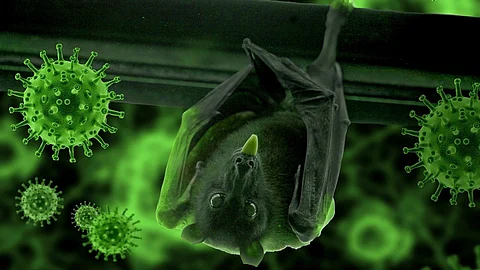Kerala saw a second outbreak of the deadly Nipah virus in 2023, and the state's reaction showed its improved readiness and promptness. Kerala handled the problem as follows, in accordance with the 2021 guidelines.
On August 11, when unexpected fever cases were recorded in Kozhikode, the alarm was raised early in the morning. The state health department sprang into action right away, gathering information about fevers and starting surveillance. A local investigation was started, and the same day, samples were submitted to the lab in Kozhikode for analysis.
The health service took preemptive action by treating the patients as probable Nipah infections even before receiving confirmation from the lab. The Kozhikode lab verified the Nipah virus's presence in the samples on the evening of August 11. The samples were sent urgently via airplane from Kochi to the National Institute of Virology (NIV) in Pune.
By the morning of August 12, senior health department representatives, including Minister Veena George, had arrived in Kozhikode and were putting together an action plan and control measures. A control room and the Nipah core committee, which consists of 19 multidisciplinary teams, were established in accordance with the 2021 action plan.
The Kozhikode Medical College quickly set up 75 isolation rooms, each with plan A, B, and C to address different scenarios. In parallel, in the impacted areas, health department representatives and local panchayat leaders worked together to create a comprehensive action plan, including numerous departments, as contacts of probable cases were evaluated in a meeting.
The administrative apparatus of the administration was already running at full capacity by the evening of August 12, when NIV-Pune formally confirmed Nipah in Kozhikode.
Through phone counseling, the control room, which was open 24/7, gave those who were in isolation or in home quarantine vital psychological support. Accredited Social Health Activists (ASHA) workers and local health department representatives were vital in mapping fever cases in the villages where positive cases were reported. Additionally, representatives from the departments of animal agriculture and forestry were on the lookout for fruit bats, which are believed to be the virus's reservoirs.
Local self-government organizations recruited volunteers and rapid reaction teams to assist people in house quarantine, and nine panchayats were designated as containment zones. These volunteers, who had previously volunteered during the COVID-19 pandemic, made sure that individuals under quarantine had access to necessities and support.
The involvement of hospitals in the spread of the virus revealed a striking resemblance between the Nipah epidemics in 2018 and 2023. Epidemiological connections showed that the majority of cases in 2018 were contracted in healthcare facilities, mainly public hospitals and clinics, when the illness was well advanced. Unfortunately, insufficient infection control procedures in hospitals exposed countless medical personnel, and one nurse, Lini Puthussery, passed away while attending to a patient.
A similar pattern emerged in 2023. It was discovered that the second victim had interacted with the index case at a private hospital, leading to a cluster at the index case's residence. Currently, more than 150 healthcare staff are being monitored.
The Nipah outbreaks in Kerala serve as a reminder of the value of a well-planned and prompt response, particularly in healthcare settings. The fight against Nipah continues to test the state's resiliency and preparedness in the face of emerging infectious diseases, even if lessons have been learned and guidelines have been developed. (Rehash/Dr. Nithin GN)


